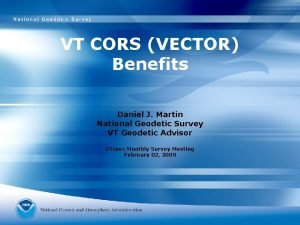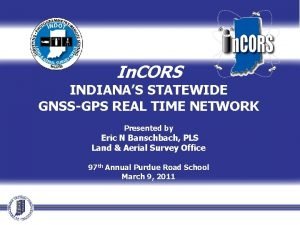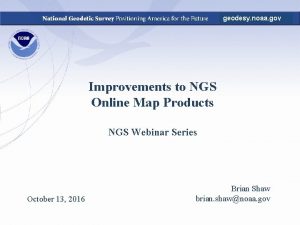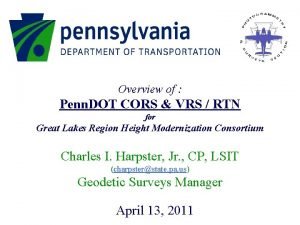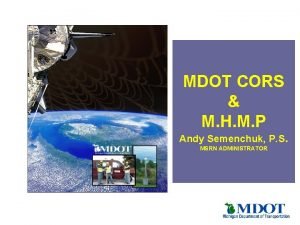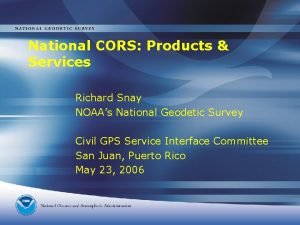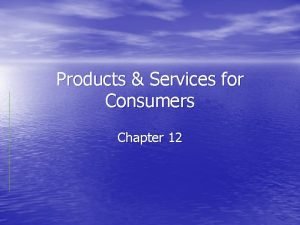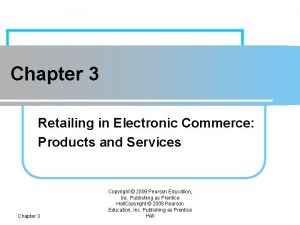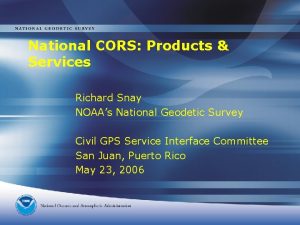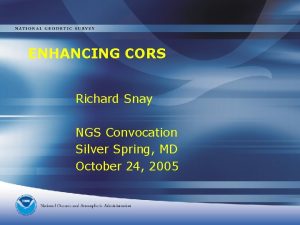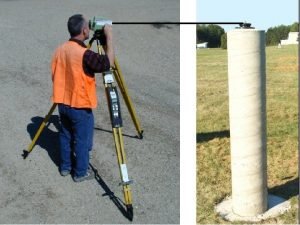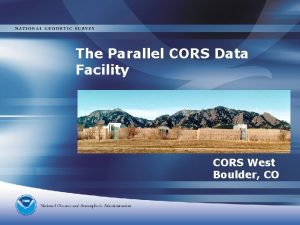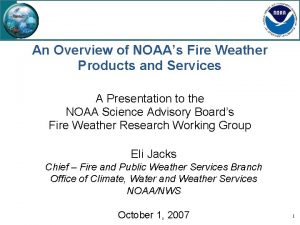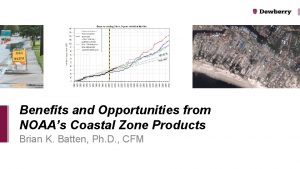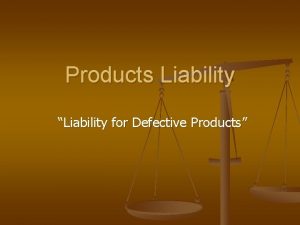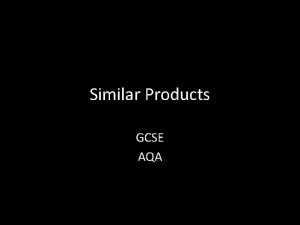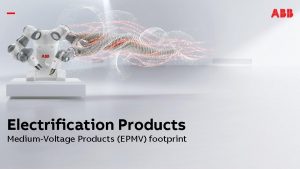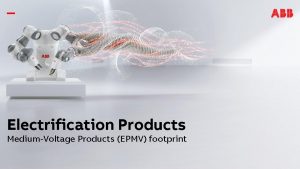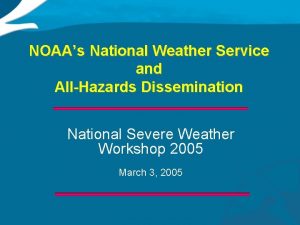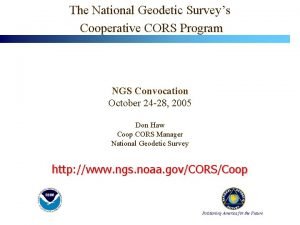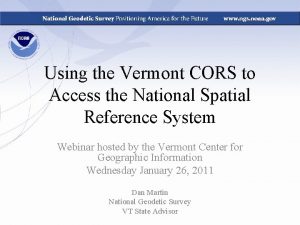National CORS Products Services Richard Snay NOAAs National


























- Slides: 26

National CORS: Products & Services Richard Snay NOAA’s National Geodetic Survey Civil GPS Service Interface Committee San Juan, Puerto Rico May 23, 2006

Continuously Operating Reference Stations (CORS)

Current CORS Coverage in Puerto Rico


CORS ANTENNAS CORS SITES


Mexican National Active Geodetic Network

CORS OVERVIEW • CORS Network contains 920+ sites • CORS Network growing at rate of 15 sites per month • More than 175 organizations participate in the CORS program • Provides code range (C/A, P 1, P 2) – and carrier phase observations (L 1, L 2) – Expect to provide L 2 C code range in near future

CORS APPLICATIONS • Postmission Static Positioning (cm-level accuracy with a few hours of data, dm-level accuracy with one minute of data) • Postmission Kinematic Positioning (dm-level accuracy for an aircraft, boat, or land vehicle) • Geophysics / Crustal Motion • Meteorology / Water Vapor in Atmosphere • Space Weather / Free Electrons in Ionosphere

Positioning Error vs. Duration of the Observing Session Dual-frequency GPS carrier-phase observations

Positioning Accuracy with Code Data Observation Time = 1 minute red = east-west blue = north-south RMS error = 25 cm + 2 ppm


Hourly Forecast of Precipitable Water

Three ways to download CORS Information • Web-based User-Friendly CORS (UFCORS) • Web-based “Standard” download • FTP (File Transfer Protocol)

OPUS Online Positioning User Service http: //www. ngs. noaa. gov/OPUS/ opus@ngs. noaa. gov

HOW DOES OPUS WORK? • Collect at least 2 hours of GPS (dual frequency carrier phase) data • Submit your GPS data file(s) through NGS web page • Your data will be processed automatically, together with GPS data from 3 suitable CORS, using NGS computers and software • Receive computed positional coordinates via email (usually in minutes)


HOW IS THE ANTENNA HEIGHT MEASURED? ARP The height is measured vertically (NOT the slant height) from the mark to the ARP of the antenna. The height is measured in meters. The ARP is almost always the center of the bottom-most, permanently attached, surface of the antenna. See GPS Antenna Calibration for photo’s and diagrams that show where the ARP is on most antennas: http: //www. ngs. noaa. gov/ANTCAL/ If the default height of 0. 0000 is entered, OPUS will return the position of the ARP. MARK

How Does OPUS Compute Position? 3 separate baselines computed 3 separate positions averaged

P 1 Place the Base Station over your first point and begin RTK survey ensuring that you are collecting Raw Data for at least 2 hours (This data will be sent to OPUS). We will now refer to this as OPUS 1. P 4 P 2 P 5 B 9999 -1 B 9999 -2 P 3 Start Rover and begin setting and controlling your panels P 6

P 1 Move the Base Station over your second point and begin RTK survey ensuring that you are collecting Raw Data for 2 hours. (This data will also be sent to OPUS). We will now refer to this as OPUS 2. P 4 P 2 P 5 B 9999 -1 P 3 B 9999 -2 Start Rover and begin controlling your panels from the second location. P 6


OPUS-DB (OPUS-Data. Base) GPS data Observation log photo(s) NGS website: OPUS-DB NGS magic NGS DATABASE description form

ONGOING CORS RESEARCH * Developing OPUS-GIS which will process a few minutes of GPS code range data (for sub-meter accuracy).

ONGOING CORS RESEARCH * Developing OPUS-RS (rapid static) that will enable users to obtain positional coordinates with cm-level accuracy using only 15 minutes of GPS carrier phase data.

ONGOING CORS RESEARCH • Exploring the use of NTRIP to stream GPS data from selected CORS via the Internet. • Should NOAA use NTRIP to stream ionospheric and/or tropospheric models via the Internet?
 Martin cors
Martin cors Indiana cors network
Indiana cors network Ngs data explorer
Ngs data explorer Cors vrs
Cors vrs Mdot cors
Mdot cors Cors
Cors Looking for richard stream
Looking for richard stream Difference between functional and innovative products
Difference between functional and innovative products Pepsi product mix
Pepsi product mix Unified products and services packages
Unified products and services packages Adding new unrelated products or services
Adding new unrelated products or services Entertainment product
Entertainment product Berkshire hathaway products
Berkshire hathaway products Service design generally differs from product design
Service design generally differs from product design Products, services, and brands: building customer value
Products, services, and brands: building customer value Market singapore
Market singapore Brandz pyramid
Brandz pyramid Branding elements and strategies
Branding elements and strategies Products and services for consumers
Products and services for consumers Products and services for consumers
Products and services for consumers Adding new unrelated products or services
Adding new unrelated products or services Products and services
Products and services Investment banker career path
Investment banker career path Retailing in electronic commerce products and services
Retailing in electronic commerce products and services Commercial bank products and services
Commercial bank products and services Strategic capacity planning for products and services
Strategic capacity planning for products and services 6 brand elements
6 brand elements
